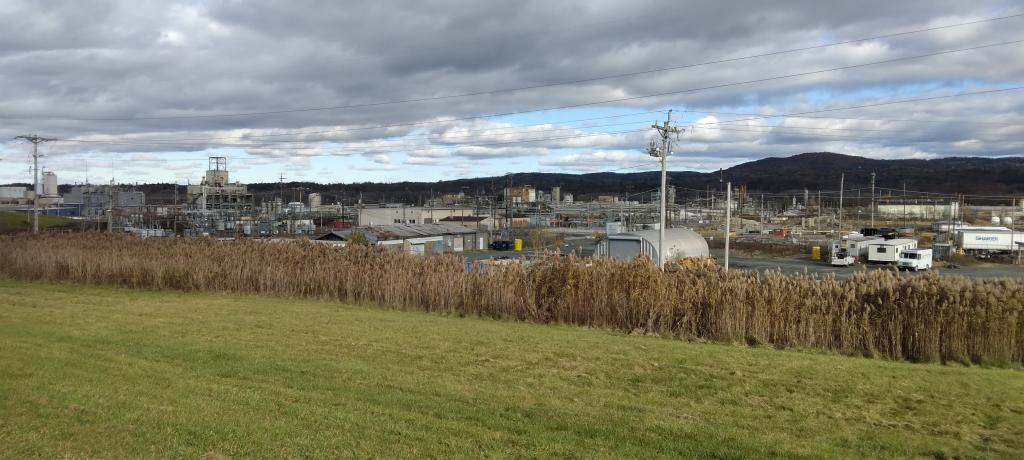Search Results for: plastics
Silicones | Plastics Technology
Momentum Plastics from the Old Waterford Landfill
The Complex Reality of Plastics Recycling
While plastics recycling is not inherently fraudulent, it does face challenges and concerns that warrant a closer examination of its complexities.
- The Challenge of Infrastructure:
One of the primary challenges in plastics recycling is the availability of adequate infrastructure. Recycling programs rely on collection systems, sorting facilities, and recycling plants to process materials. In regions lacking these facilities, recycling efforts can be inefficient or even non-existent. This deficiency in infrastructure can lead to skepticism about the feasibility of recycling. -
Contamination Issues:
Contamination of recyclables is another hurdle. When non-recyclable items or improperly cleaned materials end up in recycling bins, it can render the entire batch unusable. Contamination increases processing costs and diminishes the value of recycled materials, making recycling programs less economically viable. -
Economic Viability:
Critics often point out that recycling certain types of plastics, especially low-value or mixed plastics, may not be economically viable. The costs of collection, sorting, cleaning, and processing can sometimes outweigh the value of the recycled materials, leading to concerns about the overall impact of recycling efforts. -
The Importance of Responsible Recycling:
While there are challenges, it’s essential to emphasize that responsible recycling can still have significant benefits. Plastics recycling conserves resources, reduces the need for virgin plastic production, and contributes to waste reduction. Effective recycling programs that prioritize minimizing contamination and improving efficiency can make a meaningful environmental impact. -
Reducing Plastic Consumption:
To complement recycling efforts, reducing plastic consumption remains crucial. Reducing single-use plastic items, opting for reusable alternatives, and supporting sustainable packaging practices can help decrease the overall plastic waste generated in the first place.
Plastics recycling is might not be an outright scam, but it is a multifaceted issue with challenges related to infrastructure, contamination, and economic viability. Responsible recycling practices, coupled with efforts to reduce plastic consumption, contributes to waste reduction and resource conservation. To maximize the benefits of plastics recycling, it is essential to support well-managed recycling programs and explore innovative solutions to address the challenges it faces.
Plastics, they’re kind of everywhere today. 🚮 ♻
Lately we’ve been learning how much of a scam recycling really is especially with low value, often contaminated scrap like plastic often is. We are learning how most plastic quickly becomes trash shortly after it’s use with no destination but an incinerator, a landfill or a burn barrel.
Honestly, I don’t think it’s all that big of deal because if anything there is a glut of landfill space out there, and if your going to burn natural gas to heat and light the cities and make oil to power the cars, your also going to make plastic. Garbage is well compacted down a landfill, a few hundred acres of dumping grounds can serve a large community for decades. Plastic in a landfill is no less biodegradable than a discarded Salisbury Steak or head of lettuce or a paper bag – it generally isn’t going to rot much – landfills are permanent resting places for waste. The compaction of the waste means there is no aerobic digestion breaking down the waste in landfills and anaerobic digestion is extremely retarded too even if it does produce some methane which is problematic if not captured properly.
Even burning plastic isn’t as bad as it once was. Municipal incinerators break down plastics down to carbon dioxide and water vapor almost entirely, especially the plastics commonly used in food packaging. With the phase out of polyvinyl chloride number 3 plastics in disposable packaging, which one used chlorine as a low cost building block, the toxicity of common plastics incinerated in a low temperature fire like a trash burn barrel on a farm or rural homestead has greatly been reduced. Sure there are plasticizers that soften the plastics and dyes but they’re a small part of the waste stream and worse of them are being phased out. Not much residue or ash is produced from incinerated plastic and if anything common discarded packaging helps the waste burn better. Plastic isn’t destroying the ozone, it contains no CFCs – even Styrofoam hasn’t blown with ozone depleting chemicals in a decade.
Plastics aren’t perfect and litter both accidental and intentional is a big issue. Animals do get sick from eating plastics, especially sea creatures. It is so easy for a plastic bag to blow out a car window and get trapped in the bushes or the trees above. It’s happened to me. Plastic bags caught in trees is a big problem in cities and areas near landfills where most of the discarded ones are ultimately buried but sometimes get caught in the wind are carried by the wind. Plastic, unless it is burned, doesn’t break down in nature – unlike paper or food waste or manure which will rot when exposed to moisture and air.
There are those who want to swap out disposable plastic for metal or glass packaging, claiming the possibility of more industrial recycling of the scrap bottles and cans. But not only are metal and glass heavier and in the case of glass prone to breakage and waste, they’re less recyclable and closed loop as people want to think. Metal and glass they becomes litter or dumped in the woods is much more harmful than common plastic packaging.
Recycling isn’t closed loop. Bimetal cans, which are relatively valued as scrap metal contain coatings and multiple metals which are only partially recovered when melted down at scrap metal facilities – a portion goes up in smoke or is landfilled as draugh. Glass can be melted down and reshaped into new glass unlimited but often its not, because it’s costly to properly separate glass into seperate colors – and again some of that still becomes waste that is skimmed off and landfilled. Because of the cost of sorting glass and contamination a lot is just crushed and used instead of gravel at landfills for roads and other areas needing back fill.
But a bigger problem with glass and metal is unlike paper and plastic it tends to accumulate in the environment more. Paper or plastic often gets burned, metal and glass just breaks up and sticks around forever. Whether it’s a farm dump, a rural homestead, a back country camp or other facility, glass and metal don’t burn so they tend to get dumped in the woods. People may be more responsible today then yesterday, hauling more to the recycling center or municipal landfill but still the vast majority of waste found in the woods dumped is metal or glass. Metal and glass leads to cuts and injury to humans, livestock and other animals. Hardware disease – a cow eats hay that has discarded metal or glass in it – is so deadly that many farmers feed magnets to cows to keep them from cutting their guts open from hunks of metal.
I am not arguing for more plastic, littering or burning of waste. I think urban recycling is important as it provides a good source of raw materials for industry, especially when collected and sorted using dual stream recycling. It also encourages rural residents to keep their ditches free of cans and glass by providing a low cost method of disposal compared to municipal landfill dumping. I think there should be more subsidy for reused milk bottles and reusable packaging but it I’m also not that concerned about it either. But regardless, post consumer recycling has a pretty minimal impact on landfill dumping, it’s oversold as a feel good measure but hardly a way to eliminate the nuisance grounds, as the Canadians call them.
Microplastics Found In Human Blood In First-Of-Its-Kind Study | IFLScience
In a human living in the 21st-century industrialized world, there’s a good chance that microplastics are pumping around in your veins if this small first-of-its-kind study is anything to go by.
Reporting in the journal Environment International, scientists from the Vrije Universiteit Amsterdam developed a method to accurately measure concentrations of microplastics in human blood for the first time.
THE SOCIETY OF THE PLASTICS INDUSTRY, INC., ET AL., RESPONDENTS, v. COUNTY OF SUFFOLK, ET AL., APPELLANTS.
The Suffolk County Legislature, as part of an effort to protect the environment, in 1988 adopted the Plastics Law, banning the use of certain plastics products by retail food establishments. This is an action by representatives of the plastics industry--a nationwide trade organization and one local member--to overturn that law.
While plaintiffs advanced several alternative grounds for nullifying the law, only one remains: that the County Legislature, as lead agency, failed to conduct an adequate environmental review before passing the law. We conclude that these plaintiffs lack standing to use the State Environmental Quality Review Act (SEQRA; ECL art 8) to that end.

